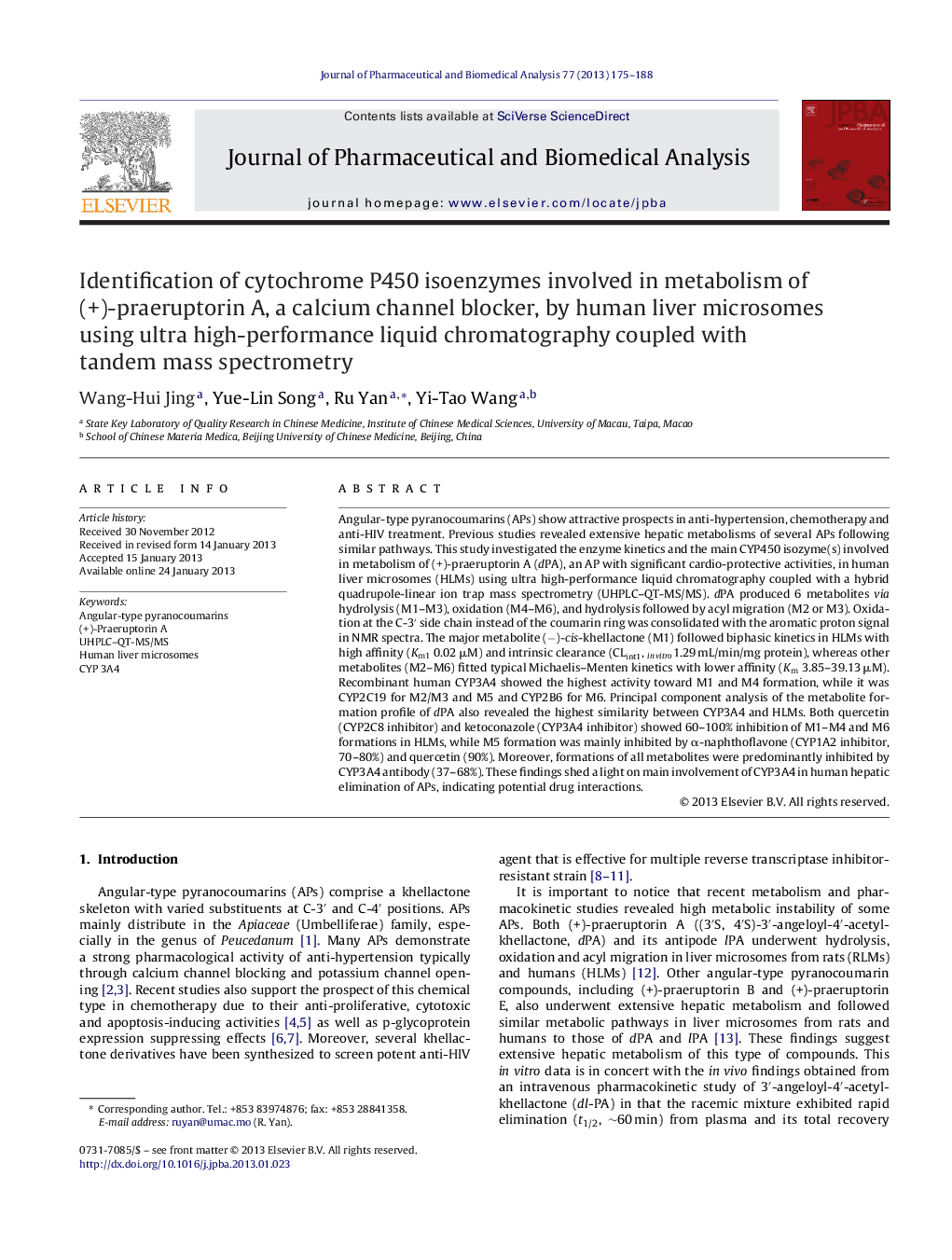| کد مقاله | کد نشریه | سال انتشار | مقاله انگلیسی | نسخه تمام متن |
|---|---|---|---|---|
| 1221985 | 1494656 | 2013 | 14 صفحه PDF | دانلود رایگان |

Angular-type pyranocoumarins (APs) show attractive prospects in anti-hypertension, chemotherapy and anti-HIV treatment. Previous studies revealed extensive hepatic metabolisms of several APs following similar pathways. This study investigated the enzyme kinetics and the main CYP450 isozyme(s) involved in metabolism of (+)-praeruptorin A (dPA), an AP with significant cardio-protective activities, in human liver microsomes (HLMs) using ultra high-performance liquid chromatography coupled with a hybrid quadrupole-linear ion trap mass spectrometry (UHPLC–QT-MS/MS). dPA produced 6 metabolites via hydrolysis (M1–M3), oxidation (M4–M6), and hydrolysis followed by acyl migration (M2 or M3). Oxidation at the C-3′ side chain instead of the coumarin ring was consolidated with the aromatic proton signal in NMR spectra. The major metabolite (−)-cis-khellactone (M1) followed biphasic kinetics in HLMs with high affinity (Km1 0.02 μM) and intrinsic clearance (CLint1, in vitro1.29 mL/min/mg protein), whereas other metabolites (M2–M6) fitted typical Michaelis–Menten kinetics with lower affinity (Km 3.85–39.13 μM). Recombinant human CYP3A4 showed the highest activity toward M1 and M4 formation, while it was CYP2C19 for M2/M3 and M5 and CYP2B6 for M6. Principal component analysis of the metabolite formation profile of dPA also revealed the highest similarity between CYP3A4 and HLMs. Both quercetin (CYP2C8 inhibitor) and ketoconazole (CYP3A4 inhibitor) showed 60–100% inhibition of M1–M4 and M6 formations in HLMs, while M5 formation was mainly inhibited by α-naphthoflavone (CYP1A2 inhibitor, 70–80%) and quercetin (90%). Moreover, formations of all metabolites were predominantly inhibited by CYP3A4 antibody (37–68%). These findings shed a light on main involvement of CYP3A4 in human hepatic elimination of APs, indicating potential drug interactions.
Figure optionsDownload as PowerPoint slideHighlights
► dPA metabolic kinetics in HLMs was determined by UHPLC–MS/MS for the first time.
► Contribution of CYPs was evaluated using inhibitors and recombinant human CYPs.
► CYP3A4 is proved to be the main isoform mediating both hydrolysis and oxidation.
► Oxidation at C-3′ side chain of dPA was consolidated with NMR spectrometry.
Journal: Journal of Pharmaceutical and Biomedical Analysis - Volume 77, 15 April 2013, Pages 175–188